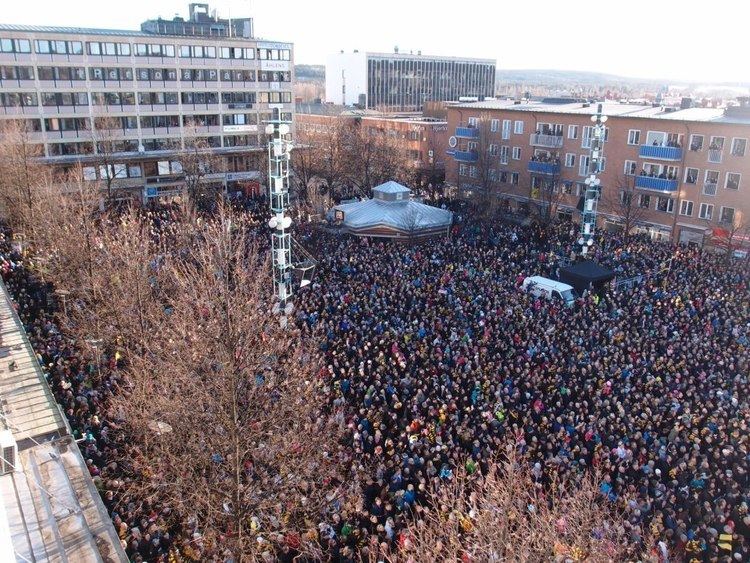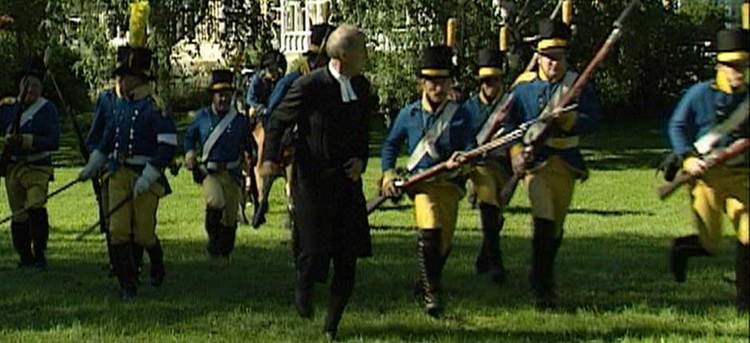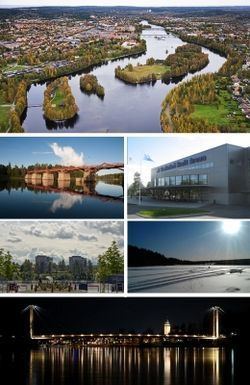Country | Area 21.74 km2 | |
 | ||
Skellefte visit sweden v sterbotten skelleftea
Skellefteå is a city and the seat of Skellefteå Municipality in Västerbotten County, Sweden, with 32,775 inhabitants in 2010. The municipality had approximately 72,000 inhabitants at the end of 2013. In the local accent the "å" is omitted and the city is pronounced locally as Skellefte.
Contents
- Skellefte visit sweden v sterbotten skelleftea
- Map of Skellefte
- Snow canon in skellefte swedish lapland
- History
- Today
- Industry
- Sports
- People
- Artists
- Climate
- References
Map of Skellefteå
The city is a historically industrial city with mining being a large industry, especially for gold – hence the nickname "Gold Town". Politically it is a Social Democratic stronghold. The city is a well-known ice hockey town, with its main team Skellefteå AIK playing in the Swedish top division, the SHL and being Swedish champions on multiple occasions.

The city was incorporated in 1845 and grew to its current population size mostly in the 1950s and 1960s, growing only slowly since. It is the second largest city in Västerbotten after Umeå and is located roughly halfway between it and Luleå. The river Skellefte älv passes through the city and it is located around 15 kilometres (9.3 mi) from the Bothnian Bay open sea. Skellefteå is served by Skellefteå Airport, locally known as Falmark, also around 15 kilometres (9.3 mi) from the city centre to the south.
Snow canon in skellefte swedish lapland
History

The name Skellefteå is recorded to having been spelled as Skelepht in 1327. The origin of the name remains unknown.
From the 14th century on, attempts were made to Christianize Skellefteå. However, – for the most part – the entire large Northern Swedish territory of Norrland was not Christianized until several hundred years after the rest of Sweden, and many northern areas such as Skellefteå remained unexplored well past the Middle Ages.
Not before the very end of the 17th century did the indigenous Sami people of Northern Sweden begin turning into Christianity, much due to the efforts by the Northern Swedish superintendent Mathias Steuchius, who worked hard to accomplish this.
Eventually, the reason for the sudden awakened interest towards Skellefteälven and the surrounding areas were the great northern fishing grounds of salmon. The increased demand for fish was sparked by a stricter enforcement of the annual month-long fasting by the Catholic Church, whereby meat was substituted by fish.
The actual city of Skellefteå is one of the youngest cities of Norrland. It was founded in 1845 by the vicar Nils Nordlander.
Today
In the 20th century, Skellefteå evolved to an industrial and mining city and many wooden houses were demolished to give room for brick buildings. The largest private employer in Skellefteå is the mining company Boliden AB, with about 1'200 employees. The mining is primarily done for copper, but with the ore particles of gold, silver and platinum also follow. However, Skellefteå is still referred to as the "Goldtown". During the 1990s, the computer industry flourished, causing subsidiaries of Ericsson and Tieto Enator to become important employers.
If things go according to plan, Skellefteå will be the site of the hind legs of the world's largest moose – Stoorn –, a tourist attraction planned to be built, spanning from Skellefteå into Arvidsjaur in Norrbotten.
Industry
Sports
People
Artists
Climate
Skellefteå has subarctic climate that is borderline continental with mild summers and cold and snowy winters. The climate is somewhat moderated by the Bothnia Bay, although marine effects are limited, ensuring very mild summer temperatures for a coastal area so far north. The surrounding municipality has an all-time high of 33.9 °C (93.0 °F) during the 2014 Swedish heat wave, which is very hot given the latitude and proximity to a major body of water. Although summer highs traditionally averaged just below 20 °C (68 °F) it has been warmer in recent decades.
